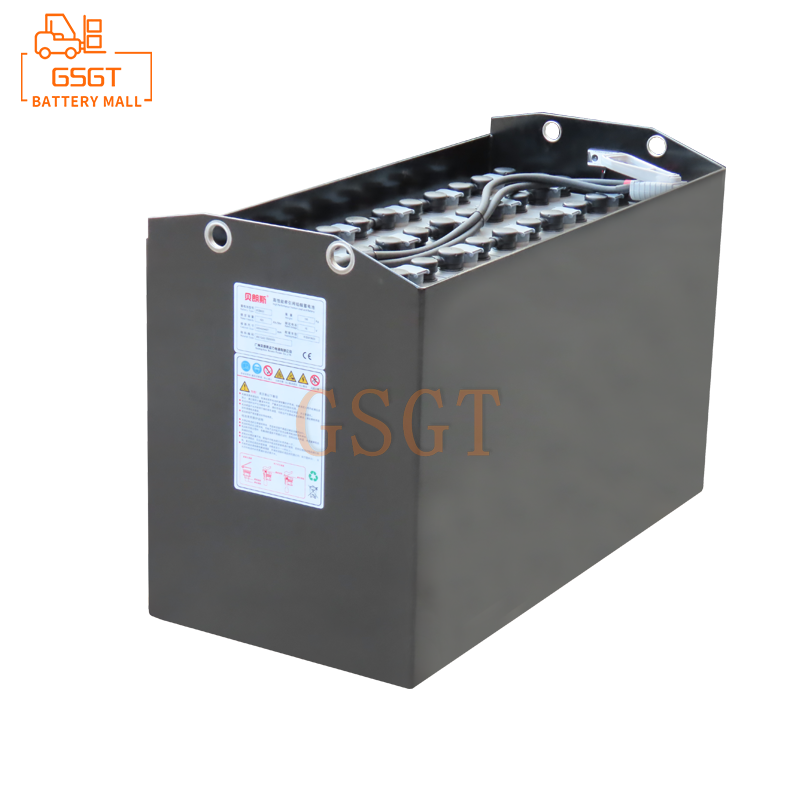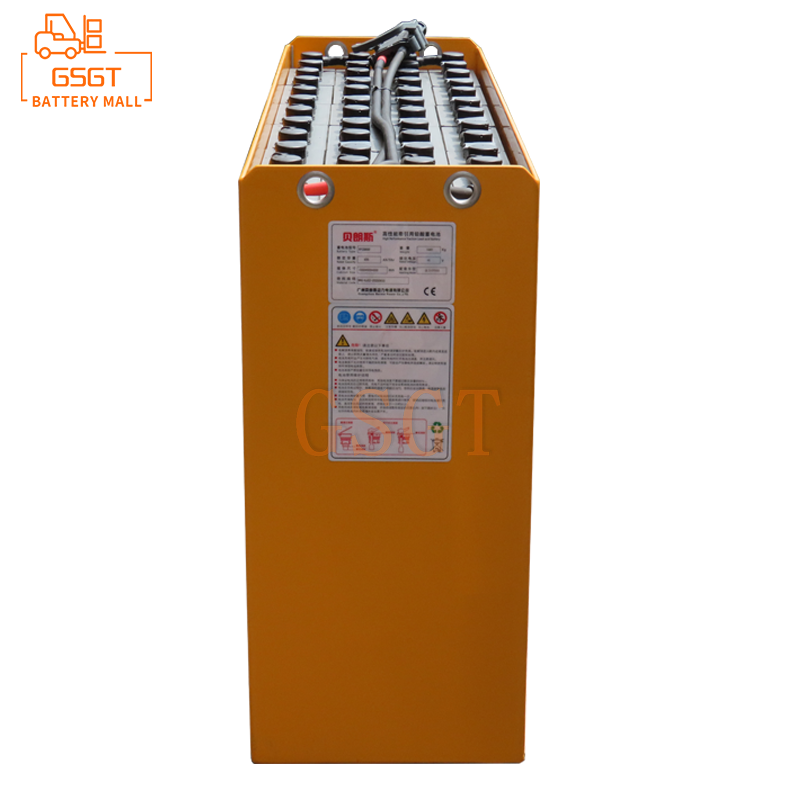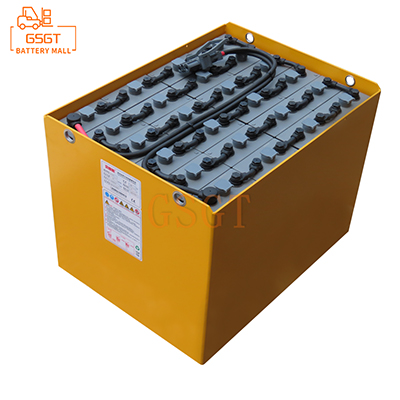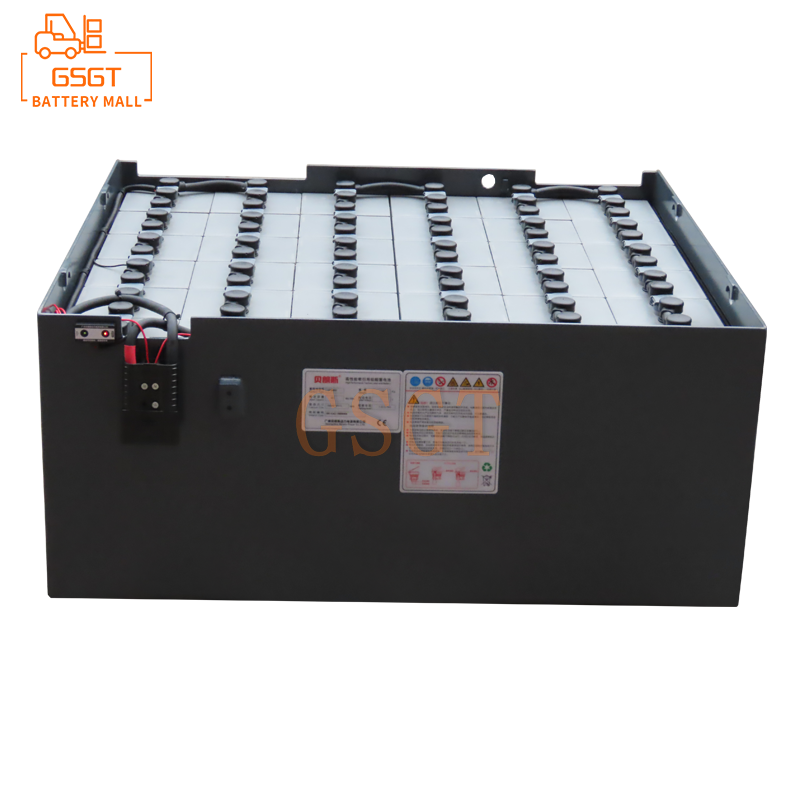Time:2025-04-26 10:07:19
Browse:515
In the modern logistics warehousing and industrial production fields, forklifts, as important material handling equipment, have a crucial impact on the entire production and operation process in terms of their working efficiency. As the power core of forklifts, the stable output of lead-acid batteries in forklifts plays a decisive role in improving the working efficiency of forklifts. This article will deeply explore the relationship between the stable output of lead-acid batteries in forklifts and their working efficiency, and propose a series of effective strategies and methods to enhance the stable output of lead-acid batteries and improve working efficiency.
1. The Importance of Stable Output of Lead-Acid Batteries in ForkLifts to Work Efficiency
(1) Ensure the continuous operation of forklifts
Forklifts need to frequently perform operations such as loading, unloading and transporting goods in logistics and industrial production, which requires them to operate continuously and stably. If the output of lead-acid batteries is unstable, problems such as sudden drops in power and excessive voltage fluctuations may occur, causing the forklift to suddenly stop during operation and interrupting the work process. For instance, in large warehouses, forklifts need to continuously transport goods from the storage area to the sorting area. Once the battery malfunctions, it will not only prevent the current handling tasks from being completed but also affect subsequent sorting, distribution and other links, resulting in a significant decline in the overall operational efficiency of the warehouse. A stable output lead-acid battery can provide continuous and reliable power for forklifts, ensuring their normal operation throughout the entire work shift. This significantly reduces downtime caused by power issues and thereby greatly enhances work efficiency.
(2) Enhance the operational performance of forklifts
The stable output of lead-acid batteries can ensure that all components of the forklift can operate under normal working voltage and current, making the lifting, traveling, turning and other actions of the forklift more stable and smooth. When the battery output is unstable, the lifting speed of the forklift may fluctuate, and it may lack power or suddenly accelerate during driving. The steering may also become less sensitive. This not only increases the difficulty of the operator's work and reduces the accuracy of the operation, but also prolongs the time to complete each operation task. On the contrary, a stable battery output enables forklifts to operate at their best performance, enhancing the speed and accuracy of cargo loading and unloading, shortening the time for cargo handling, and thereby improving overall work efficiency. For instance, in the handling operations of precision instruments where the accuracy of goods loading and unloading is highly demanded, a stable battery output can ensure that the forklift smoothly lifts and lowers the goods, avoiding damage to the precision instruments due to unstable operation, and at the same time, it can also improve the efficiency of loading and unloading.
(3) Reduce maintenance costs and downtime losses
Lead-acid batteries with stable output have a relatively long service life and a lower probability of failure. Frequent unstable output will accelerate the aging of the internal plates of the battery, the shedding of active substances and other problems, leading to premature damage of the battery and requiring frequent replacement. Replacing the battery not only requires a large amount of capital investment, but also causes the forklift to stop for a relatively long time, affecting the work progress. In addition, unstable output may also cause malfunctions in other electrical components of the forklift, further increasing maintenance costs and downtime. By ensuring the stable output of lead-acid batteries, the frequency of maintenance and replacement of batteries and other related components can be reduced, lowering the operating costs of enterprises. At the same time, it can reduce the downtime losses caused by equipment failures and indirectly improve work efficiency.
2. Factors Affecting the Stable Output of Lead-Acid Batteries in Forklifts
(1) The quality of the battery itself
There are significant quality differences among lead-acid batteries of different brands and models. High-quality storage batteries are made of superior plate materials, electrolytes and casings, and their manufacturing processes are more refined, which can ensure their stable performance during long-term use. Some poor-quality batteries have low purity of plate materials, and the active substances are prone to fall off. The electrolyte formula is unreasonable. During the charging and discharging process, problems such as rapid capacity decline and large voltage fluctuations are likely to occur, and they cannot provide stable power output for forklifts. In addition, the design structure of the battery also affects its performance. For instance, the thickness and spacing of the plates, as well as the distribution of the electrolyte, all have an impact on the charging and discharging efficiency and stability of the battery.
(2) Charging Management
The charging process is a key link that affects the performance and stable output of lead-acid batteries. Improper charging methods, such as overcharging and undercharging, can all cause damage to the battery. Overcharging will generate excessive heat inside the battery, accelerating the oxidation and aging of the plates. At the same time, it will also cause the electrolyte to lose water, reducing the capacity and performance of the battery. Undercharging will prevent the active substances on the battery plates from being fully restored. Long-term undercharging will lead to sulfation of the plates, increasing the internal resistance of the battery and making the output voltage unstable. In addition, the performance and quality of the charging equipment are also of vital importance. Poor-quality chargers may fail to provide stable charging voltage and current, resulting in uneven charging and affecting the service life and stable output of the battery.
(3) Usage Environment
The working environment of forklifts is complex and diverse. Factors such as temperature, humidity and dust can all have an impact on the performance of lead-acid batteries. In high-temperature environments, the chemical reaction rate inside the battery accelerates, and the evaporation of the electrolyte intensifies, which can easily lead to water loss in the battery and aging of the plates. In low-temperature environments, the conductivity of the electrolyte decreases, the capacity of the battery drops significantly, the output voltage becomes unstable, and the start-up and operation of the forklift will become difficult. In addition, a humid environment is prone to cause corrosion of the battery casing and terminals, affecting their electrical connection performance. Dust and impurities entering the interior of the battery may cause short circuits and other faults, seriously affecting the stable output of the battery.
(4) Operators' usage habits
The usage habits of the operators have a direct impact on the lifespan and stable output of lead-acid batteries. Frequent rapid acceleration, sudden braking, and long-term heavy-load operation will cause the battery to output a large current in a short period of time, accelerating the aging and damage of the battery. In addition, some operators do not pay attention to timely charging and always wait until the battery is completely drained before charging. This excessive discharge behavior will cause irreversible damage to the battery, reduce its capacity and performance, and affect its stable output.
3. Strategies for Enhancing the Stable Output of Lead-acid Batteries in Forklifts to improve work Efficiency
(1) Choose high-quality lead-acid batteries
When choosing lead-acid batteries for forklifts, enterprises should give priority to selecting products from well-known brands with reliable quality. Attention should be paid to various technical parameters of the battery, such as rated capacity, rated voltage, and the number of charge and discharge cycles. Generally speaking, the larger the rated capacity of a battery, the longer the power it can provide and the longer-lasting battery life. Batteries with more charge and discharge cycles have a relatively longer service life. At the same time, it is necessary to check the manufacturing process and material quality of the battery, and choose products with high purity of plate materials, reasonable electrolyte formula and sturdy and durable casing. In addition, you can also refer to the usage evaluations and actual usage experiences of other users to choose a battery brand and model with a good reputation.
(2) Optimize charging management
•1.Adopt an appropriate charging method
According to the characteristics and usage conditions of lead-acid batteries, select the appropriate charging method. The common charging methods at present include constant current charging, constant voltage charging and staged charging, etc. Staged charging is a relatively ideal charging method, which is generally divided into three stages: constant current charging, constant voltage charging and float charging. In the early stage of charging, constant current charging is adopted to charge the battery at a relatively fast speed. When the battery voltage reaches a certain value, it switches to constant voltage charging to ensure that the battery can be fully charged. Finally, it enters the float charging stage, which is used to replenish the power lost by the battery during self-discharge and keep the battery fully charged. This charging method can prevent overcharging and undercharging, extend the service life of the battery, and improve its stable output performance.
•2. Use high-quality charging equipment
Invest in purchasing chargers with excellent performance and reliable quality. High-quality chargers feature intelligent control functions that can automatically adjust the charging voltage and current based on the battery's status, achieving precise charging. Meanwhile, the charger should be equipped with multiple safety protection functions such as overcharge protection, overcurrent protection, and short-circuit protection to ensure the safety and reliability of the charging process. In addition, regular maintenance and inspection of the charging equipment should be carried out to promptly identify and resolve equipment malfunctions and ensure the normal operation of the charging equipment.
•3. Develop a scientific charging plan
Based on the working shifts and usage frequency of the forklift, formulate a reasonable charging plan. Avoid charging the battery when its power is too low. Generally, charging should be carried out when the battery's power remains at 20% to 30%. At the same time, it is necessary to ensure sufficient charging time to make sure the battery is fully charged. For forklifts that are not used for a long time, the battery should also be charged regularly to prevent it from being discharged due to self-discharge.
(3) Improve the usage environment
•1.Temperature Control
In high-temperature environments, forklifts can be equipped with sunshades or parked in cool and well-ventilated areas to reduce the working temperature of the battery. Cooling devices, such as fan cooling or liquid cooling systems, can also be used to dissipate heat from the battery. In low-temperature environments, insulation covers can be installed on the battery or heating devices can be used to increase the battery's temperature and improve its performance. At the same time, it is necessary to avoid forklifts working for long periods in extreme temperature environments as much as possible to reduce the impact of temperature on the battery.
•2. Moisture-proof and dustproof
Keep the forklift's workplace dry and clean, and avoid exposing the battery to damp and dusty environments. A protective cover can be installed on the battery to prevent dust and moisture from entering. Regularly clean the battery, remove dust, dirt and corrosion from the casing and terminals, and maintain good electrical connection performance.
(4) Standardize the usage habits of operators
Strengthen the training of forklift operators to enable them to understand the working principle, performance characteristics and correct usage methods of lead-acid batteries. Educate the operators to avoid aggressive driving behaviors such as sudden acceleration and sudden braking, and reasonably control the working load of the forklift to avoid long-term heavy-load operation. At the same time, it is necessary to cultivate the habit of timely charging among the operators and strictly follow the charging plan for charging. In addition, regular assessments should be conducted on the operators to ensure they master the correct operation skills and maintenance knowledge, and to enhance their sense of responsibility and professional level.
(5) Regular maintenance and inspection
Establish a complete battery maintenance and inspection system, and regularly inspect and maintain lead-acid batteries. Check the electrolyte level of the battery and replenish distilled water or special lead-acid battery electrolyte in time. Check whether the terminal connections of the battery are firm and whether there is any corrosion. If there are any problems, deal with them in time. Regularly conduct charge and discharge tests on the battery to check its capacity, voltage, internal resistance and other parameters, promptly identify any problems with the battery, and take corresponding measures to repair or replace it. In addition, professional testing equipment can be utilized to conduct a comprehensive performance assessment of the battery, providing a scientific basis for its maintenance and management.
In conclusion, the stable output of lead-acid batteries in forklifts is a key factor in enhancing the working efficiency of forklifts. By choosing high-quality batteries, optimizing charging management, improving the usage environment, standardizing the usage habits of operators, and conducting regular maintenance and inspection, a series of measures can be taken to effectively enhance the stable output performance of lead-acid batteries, extend their service life, reduce operating costs, thereby significantly improving the working efficiency of forklifts and providing a strong guarantee for the logistics and production operations of enterprises. In the future development, with the continuous advancement of technology, we should also constantly explore and apply new technologies and methods to further enhance the performance and reliability of forklift lead-acid batteries, and promote the sustained development of the logistics and industrial production fields.

$2450

$3810

$3405

$4045

MESSAGE
Professional And Efficient
Security
Affordable Price
Professional Services